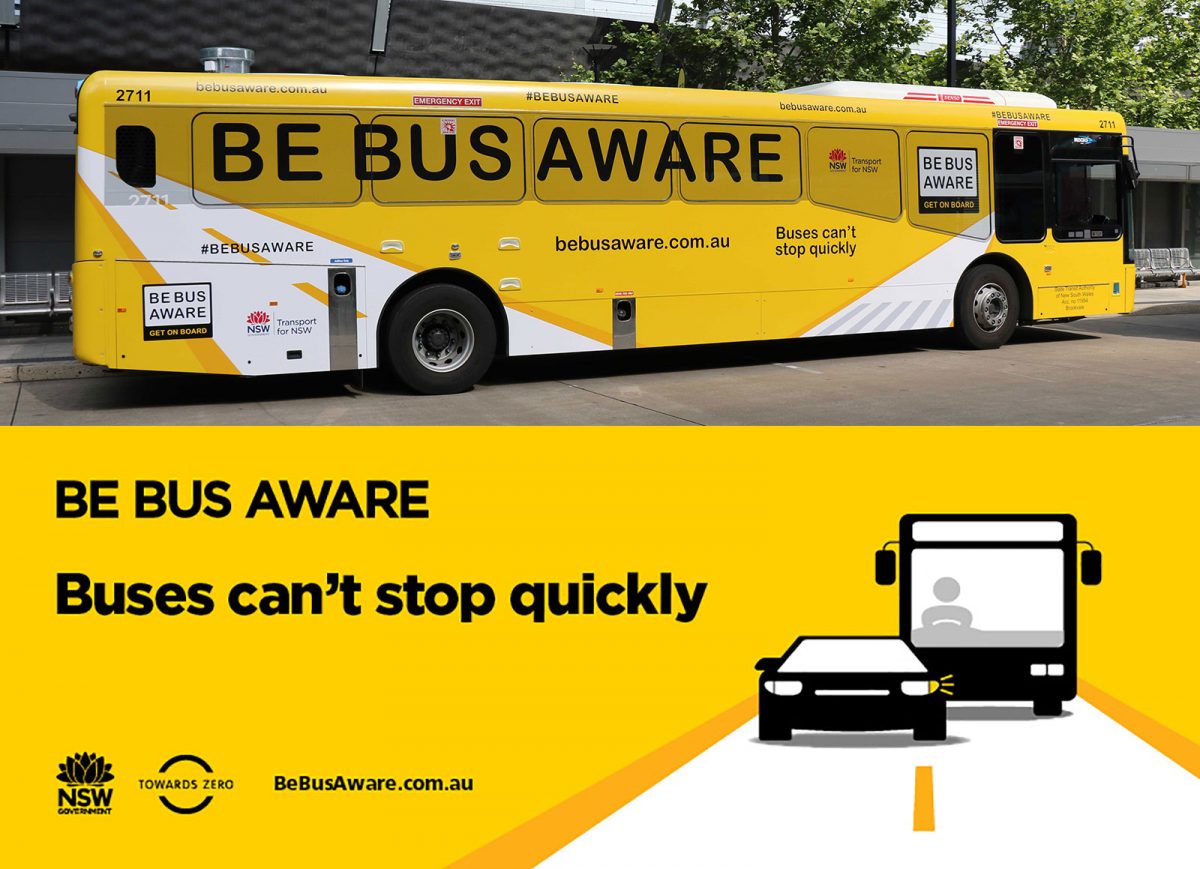Be Bus Aware highlights the importance of bus safety for all road users.

Be Bus Aware highlights the importance of bus safety for all road users. Buses are large, heavy vehicles and can’t stop quickly. Each year, Bus Safety Week helps raise awareness for all road users on how to stay safe on and around buses, helping to reduce injuries and fatalities.
Millions of trips
NSW has one of the largest metropolitan bus fleet in Australia. Almost 4000 buses operate in the Sydney area, while another 1000 buses service the Newcastle, Wollongong and Blue Mountains areas. Passengers take more than 200 million trips on buses throughout NSW each year.
From 2012 to 2016, 29 people lost their lives and 474 people were seriously injured in bus crashes on NSW roads.
These 29 fatalities consisted of 13 pedestrians, two bicycle riders, eight drivers of other vehicles, one passenger of other vehicle, three bus passengers, one bus driver and a motorcyclist.
Pedestrians
Pedestrians made up the largest group of bus fatalities over the 2012 to 2016 period. Bus Safety Week promotes safety for pedestrians, who should:
- Plan ahead and don’t rush for the bus
- Follow the rules and cross with care
- Avoid being distracted by mobile devices
- Stand back from the kerb when waiting for a bus.
Adults always hold your child’s hand when crossing the road
School-aged children might seem independent, but they still need a hand. Remember:
- Always meet your child AT school or the bus stop. NEVER wait on the opposite side of the road and call them across.
- Always supervise your child and hold their hand when walking to and from the bus stop or interchange and when crossing the road until they are at least 10.
- Wait until the bus has gone then use a safe place to cross the road.
Drivers
We know that because of their sheer size and mass, buses cause severe outcomes for other road users in crashes. Buses can’t stop quickly and drivers should:
- Give way to buses
- Not merge too closely in front of buses
- Slow down to 40 km/h when bus lights are flashing.
Bicycle riders
- If you are overtaking a bus, avoid passing it when it is turning – buses can take up more than one lane when they turn
- You may travel in a Bus Lane, Tram Lane, Transit Lane or Truck Lane but not in a Bus Only Lane
- Follow the rules and ride with care.
Passengers
More than one quarter of all seriously injured bus passengers are aged 70 years or over. If you are older, have a disability or are pregnant, try to sit closer to the front of the bus or in a courtesy seat. All bus passengers should:
- Press the button well before your stop to give the driver plenty time to stop safely
- Wait until the bus has stopped before you get out of your seat.
